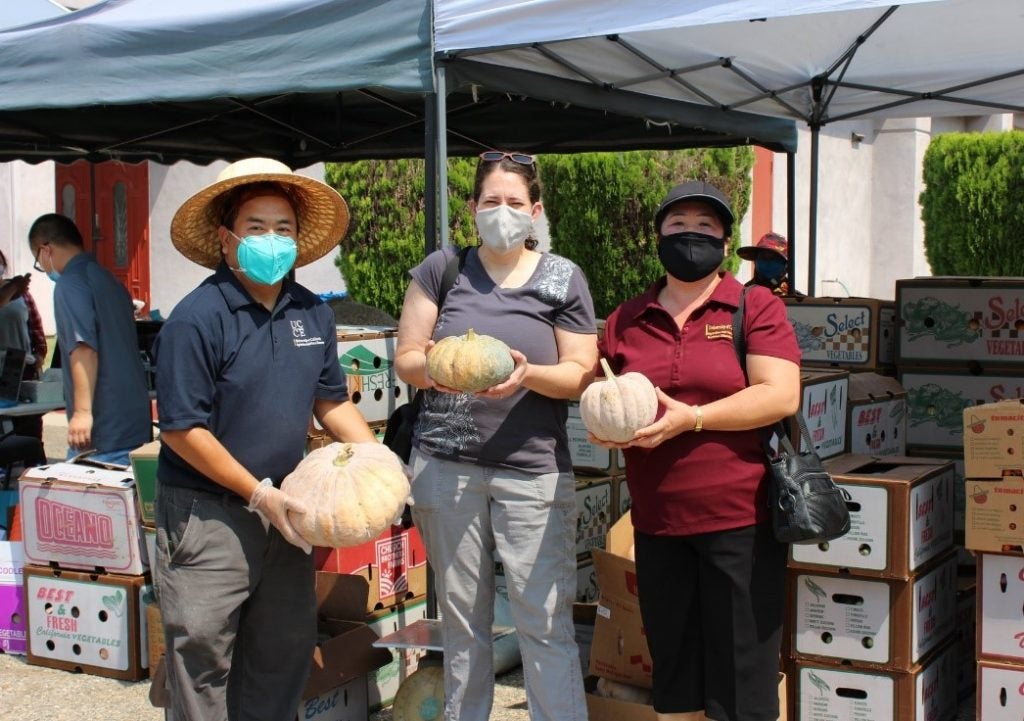Ruth Dahlquist-Willard is a small farms adviser with the University of California Cooperative Extension, focusing on immigrant, refugee and other farmers with limited resources in the San Joaquin Valley.
Many of the Southeast Asian farmers she supports are first-generation immigrants who came to California starting in the late 1970s after the Secret War in Laos, or who came as recently as 2004. Some of the Latino farmers are first-generation immigrants who were previously farm laborers and are now moving into operating their own farms.
These farmers grow a wide variety of fruits and vegetables, typically on 15 to 30 acres of land. Because they often have less representation in water policy discussions, we invited Ruth to share some of her experiences to help build a better understanding of the challenges facing small-scale farmers.
What are the biggest water challenges confronting the small-scale farmers you advise?
There are several challenges: more variable precipitation associated with a changing climate, resulting in less reliable water supplies; regional groundwater overpumping, especially during droughts; and groundwater regulation under the Sustainable Groundwater Management Act (SGMA) that has the potential to limit the available options for small farms and/or create financial and regulatory incentives that do not benefit them.
The small-scale diversified vegetable farms operated by many immigrant and refugee farmers rely almost entirely on groundwater and tend to have shallow wells, which are the first to dry up.
During the recent drought, my extension colleague Michael Yang, who has been supporting Southeast Asian farmers for 27 years, took many calls from farmers experiencing dry wells. Hmong-speaking USDA staff in Fresno provided resources for suicide prevention and even drove to farms to speak with farmers on the verge of suicide.

“The most rewarding part of my job is when underserved farmers benefit from resources through my program that they otherwise would not have had access to,” says Ruth Dahlquist-Willard (center), a small farms adviser with the University of California Cooperative Extension (UCCE). “I believe strongly in the equitable distribution of public resources, and I am thankful to be working for an institution that has a stated value of developing an inclusive and equitable society.” (She is pictured here with UCCE community educators Michael Yang and Sua Vang. Photo credit: Carmen Mendoza, ABIRC).
How could SGMA affect small-scale farmers?
As SGMA is implemented, groundwater sustainability agencies may limit the groundwater these farmers can pump or limit their ability to drill a new well if their well dries up. There may also be added costs, such as fees for groundwater pumping, fees to support agency operations or installing new flow meters to measure groundwater use, which cost at least $2,000 each to install.
Some farmers could find it harder to stay in business if costs increase substantially or if their groundwater agency limits new wells. This is especially true for famers who are renting land and have difficulty accessing loans.
Small farms located outside of water districts and without access to surface water have less political representation. Last year, I organized a panel on SGMA at the Latino Farmer Conference, and there were farmers in undistricted areas attending who had never heard of SGMA before.
Can SGMA benefit small-scale farmers?
SGMA could benefit small farms in the long term in the same way it could benefit farms of all scales — by eventually stopping overdraft and stabilizing groundwater levels.
However, SGMA does not include any enforceable provisions for equity in management decisions or avoidance of economic impacts to farmers. In some areas, groundwater will become a scarce resource that is traded, and it is hard to imagine that smaller-scale and less wealthy farmers would not be at a disadvantage in these situations. How California’s groundwater regulations could impact small-scale farmers. Share on X
What should groundwater agencies do to engage small-scale farmers in the SGMA process?
One of the biggest challenges for groundwater agencies is to not simply inform all of their groundwater users of the steps of SGMA implementation, but to engage them in an inclusive way.
This means a commitment to soliciting their feedback, seriously considering how groundwater management decisions will affect their operations and including protections for those most at risk. For example, well mitigation programs can compensate farmers with shallower wells that dry up under a groundwater management plan.
How can agencies deepen that engagement and make it authentic?
The best way is to work with local community partners, extension offices and agencies who already have trusted relationships with small farmers.
In the Fresno area, we are engaged with several groundwater sustainability agencies around inclusion of small-scale farmers, and we partner with the Asian Business Institute and Resource Center, which received a state grant to conduct SGMA outreach to small-scale Southeast Asian farmers.
Using varied outreach methods in multiple venues is also helpful. One agency passed out flyers at swap meets to reach groundwater users who might not have been reached by a mass mailing.
On a statewide level, providing small-scale farmers with more funding and incentive programs for improved irrigation scheduling and water-saving technologies would help small farms prepare for SGMA and future droughts.









